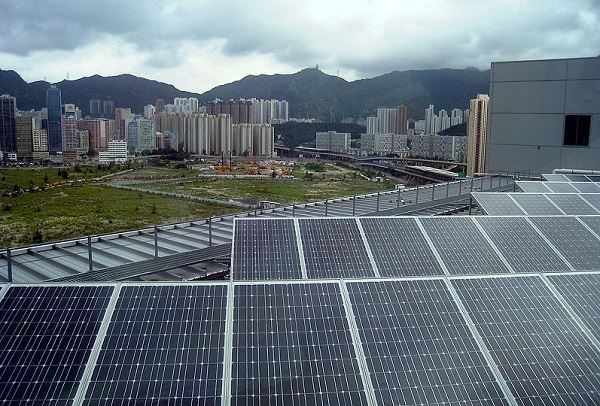To put the 12 gigawatts of solar power that China appears to have installed in 2013 in perspective, consider this: That one-year total is approximately equal to what the U.S. has installed in its entire history. And the U.S. is actually no solar slouch.
More context: It wasn’t that long ago that for China, solar was strictly an export product, a way for local governments to drive manufacturing growth. The original five-year plan for 2011-15 included a cumulative domestic solar goal of 5 GW. Cumulative! But in 2012, facing calamitous solar manufacturing overcapacity, the country began talking about ratcheting up domestic installment. Add in the smog crisis, and suddenly everything had changed.

The 12 GW in 2013 was the most for any country ever in a single year (by a long shot; as far as we can tell, the old record was Germany’s 7.6 GW in 2012). And more is on the way, Bloomberg New Energy Finance said:
The Chinese government is targeting 14 GW of additional PV capacity in 2014. Transmission grid-connected projects were the vast majority of China’s solar market last year, but the government is aiming for at least 60 percen of this year’s installations to be rooftop capacity, which is connected to the distribution grid rather than the transmission grid. A shift to rooftops rather than remote deserts will bring additional legal and financial complications for developers and so Bloomberg New Energy Finance expects the target to be slightly undershot in 2014 – but with higher growth in 2015.
China also had a solid year with wind, adding 14.92 GW last year; not its biggest year, but about 2 GW more than the U.S. has ever added in a single year.
Still, the question persists: Is it enough? Or more to point, given its coal use, can China’s renewable efforts really make a difference in the long-term carbon-emissions trajectory of the country?
The question was quite correctly raised by Armond Cohen, in a blog post on the website of the Clean Air Task Force, where Cohen is executive director, and that was republished here on EarthTechling. I went in a similar direction myself last September when a report revealed that China was likely to add 38 gigawatts of coal capacity per year until 2022 before slowing down the pace.
Cohen makes a strong case that with so many new coal plants being built in China, it’s going to be very difficult for the country not to continue to burn large amounts of the stuff for many, many years in the future. That’s why he’s a big proponent of carbon capture and storage. As he wrote last October:
Without CCS applied widely in China, the nation’s coal fleet will remain the largest global clustered source of carbon dioxide emissions, with a ‘long tail’ that could last for much of the 21st century – making most climate management plans, such as the “trillion ton cap” that was implied this month by the Intergovernmental Panel on Climate Change, nearly impossible to reach.
Still, after the 12 GW figure was reported, I couldn’t help but be in awe of China’s achievement, and, perhaps irrationally, begin to believe that it might be setting off on a miraculous solar adoption binge. I asked Cohen what he thought. In his post, he had mistakenly understated China’s 2013 solar growth, pegging it at 3.6 GW based on partial-year data (an error he told me he intends to correct). Does the fact that it was more than three times that, and that the wind addition was nearly twice as big as he originally thought, give him hope?